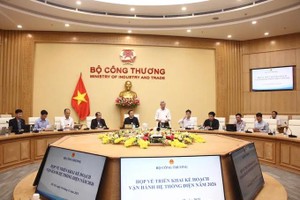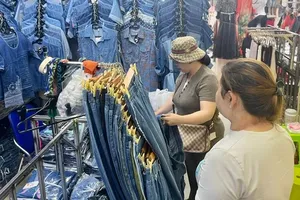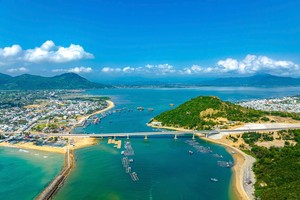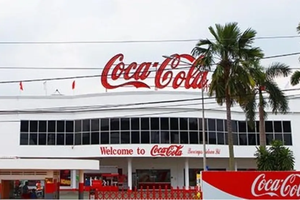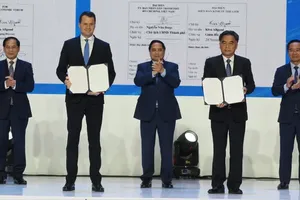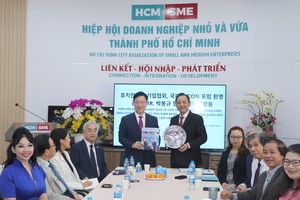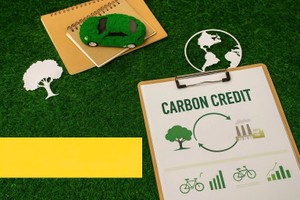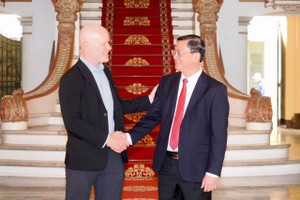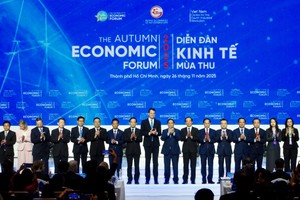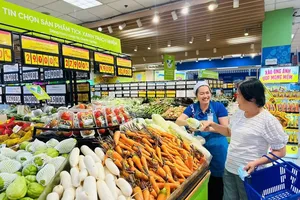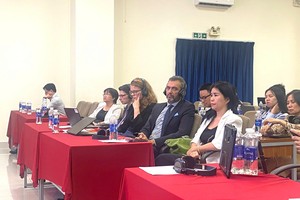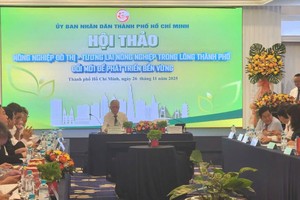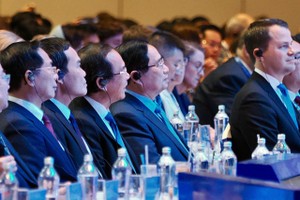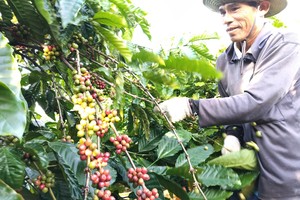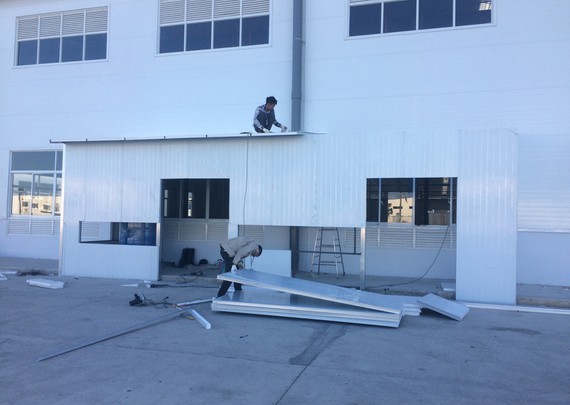 A project built with environmentally friendly building materials. (Photo: SGGP)
A project built with environmentally friendly building materials. (Photo: SGGP)
Creating a competitive advantage for enterprises Dong Chau Production, Trading, and Service Company in Ho Chi Minh City, despite being affected by the Covid-19 pandemic like most construction enterprises, its construction works were not interrupted. Even in the most stressful period of the pandemic, the company still managed to ensure jobs for workers and maintain good sales throughout the year. “We have overcome the pandemic by using prefabricated building materials in the construction of our projects. Especially, during the pandemic, many enterprises urgently needed to build accommodations for workers to stay at the factories. The construction materials we used met the requirements of fast construction progress and reasonable prices, so we received many construction contracts," said Mr. Le Tien Linh, Director of Dong Chau Company. Similarly, a representative of Tecco Real Estate Services Company - West Saigon Branch said that, from designing to building construction projects for partners, the company always advised investors to choose new and environmentally friendly building materials, such as bricks, aluminum frames, glass, and decorative wall tiles. It has been creating a competitive advantage for the company in the market. According to engineer Nguyen Thanh Nhan from the HCMC University of Technology, new building materials and assembly building technology have gradually become popular, thanks to many outstanding advantages compared to traditional ones. “According to research, by using Expand Polystyrene (EPS) panels, enterprises can save at least 30 percent of the cost per square meter compared to traditional houses. With prefabricated houses, the workload is reduced significantly, so it saves purlins, constructs quickly, and helps to reduce insulation costs and power consumption. Moreover, with precise dimensions, these materials are easy to construct and have less material loss during construction. The construction time of prefabricated houses is only about half of that of traditional ones and does not depend too much on weather and climate factors because the modules have been processed and manufactured in the factory first. Designs for construction projects using new building materials are more and more diverse and aesthetically pleasing, so they are increasingly popular," engineer Nguyen Thanh Nhan analyzed. Architect Hoang Van Tin of the HCMC Architects Association added that, with prefabricated house technology using lightweight building materials, such as EPS panels, it has a simple design foundation that can be built on any terrain from the concrete to soft ground, even on water. Not to mention that the future expansion is quite simple, but the cost is not as high as the traditional houses. Prefabricated houses can be easily dismantled and moved to another place conveniently.Still need a stronger push The use of traditional building materials has been negatively affecting the environment, causing many consequences, such as land loss, increasing greenhouse gas emissions, and other harmful gas emissions. According to statistics, to make one billion burnt clay bricks, about 1.5 million cubic meters of clay will be extracted at a depth of about 2 meters, equivalent to 75 hectares of agricultural land. More than ten years ago, the Prime Minister issued Decision No.567/QD-TTg/2010 on the development of unburnt building materials - a new form of environmentally friendly building materials as one of the resolutions for environmental protection. Currently, Vietnam has more than 1,600 factories producing unburnt building materials with many products such as concrete bricks (aggregate cement bricks), autoclaved/non-autoclaved aerated concrete bricks, foam concrete blocks, hollow-core concrete panel (acotec), and autoclaved aerated concrete wall panels. The total design capacity of these facilities is about 10.2 billion standard blocks per year, accounting for nearly 30 percent of the total production design capacity of building materials in general. With this volume, Vietnam annually saves about 7.5 million cubic meters of clay, equivalent to 375 hectares of land exploited at a depth of 2 meters, reduces the consumption of about 750,000 tons of coal, and cuts gas emissions by approximately 2.85 million tons of carbon dioxide. However, compared to the total construction demand of Vietnam, this figure remains modest. According to many architects, the largest difficulty in using green building materials is the habit of using iron and reinforced concrete in townhouses. Therefore, many people are still hesitant to use new products. As for building material enterprises, their limitations are in terms of technology, capital, and experience in producing new and environmentally friendly products. Therefore, to develop this field, first of all, enterprises need to link with each other for technology transfer, information exchange, and healthy competition in the market. In the development orientation of the building materials industry, the Government and ministries need to have specific and preferential policies to encourage enterprises to produce environmentally friendly building materials.
There are no official statistics on the use of new building materials, but records in the construction market show that these materials are gradually gaining popularity. Many architects in the HCMC Architects Association shared that they had been receiving many contracts to design construction works with new building materials.

